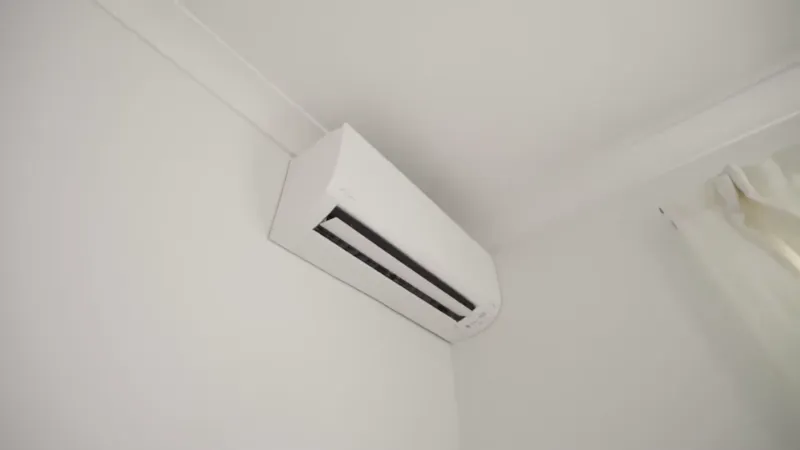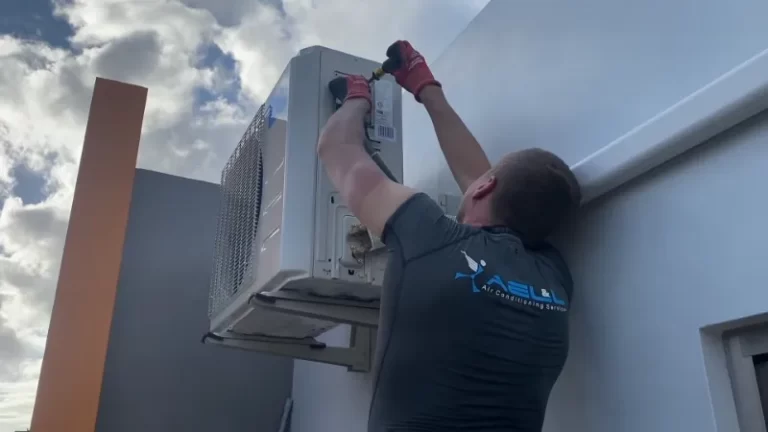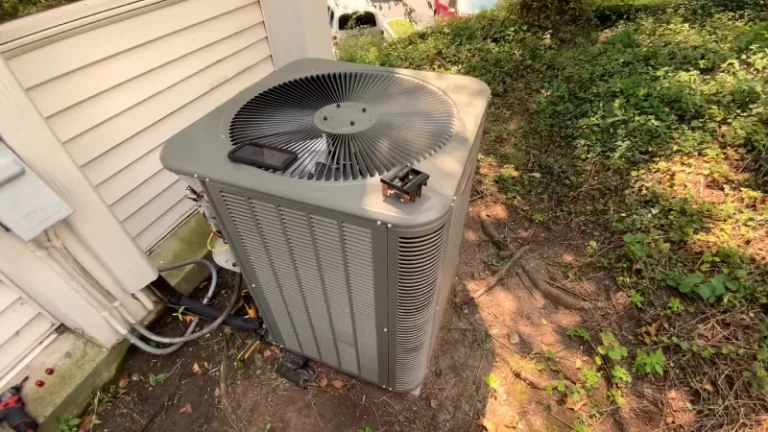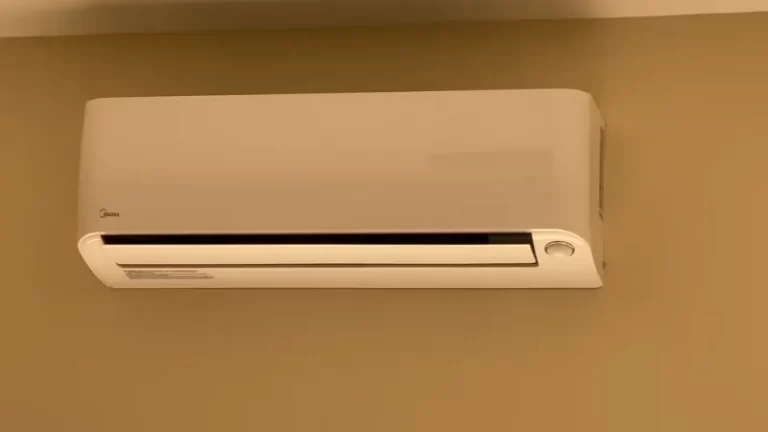Can An Air Conditioner Cause Carbon Monoxide?

Air conditioners are a common feature in many homes, providing much-needed relief from hot and humid weather. While air conditioners are generally safe to use, it is important to understand the potential risks associated with them, including the possibility of carbon monoxide (CO) production.
This article will answer the question: can an air conditioner cause carbon monoxide? It will discuss the potential sources of CO production, safety precautions to take, and how to avoid CO poisoning.
You'll Learn About
Can an Air Conditioner Cause Carbon Monoxide?
Air conditioners are an essential part of our lives, especially during hot summers. They are used to cool our homes and offices and make them comfortable. In addition, they also help to improve air quality by filtering out dust and other particles.
But, can an air conditioner cause carbon monoxide poisoning?
What is Carbon Monoxide
Carbon monoxide (CO) is an odorless, colorless, and tasteless gas that can be hazardous to human health. It is produced when fuel is burned, such as in cars, furnaces, stoves, and fireplaces. Inhaling high levels of CO can lead to headaches, nausea, dizziness, and even death.
How an Air Conditioner Can Produce Carbon Monoxide
It is possible for an air conditioner to produce carbon monoxide, but it is highly unlikely. This usually happens when an air conditioner is not properly installed or maintained. If the unit is not ventilated correctly, exhaust gases can leak out, which can contain carbon monoxide.
How to Prevent Carbon Monoxide Poisoning From an Air Conditioner
To prevent carbon monoxide poisoning from an air conditioner, it is important to ensure that the unit is properly installed and maintained. It is also important to ensure that the unit is ventilated properly and that the exhaust gases are directed away from the living area.
Regular maintenance should also be done to ensure that the unit is functioning properly.
Carbon monoxide poisoning from an air conditioner is a rare event, but it is still important to take the necessary precautions. Ensuring that the unit is properly installed and maintained and that the exhaust gases are directed away from the living area are the best ways to prevent carbon monoxide poisoning from an air conditioner.
Do Air Conditioners Emit Harmful Gases?
Air conditioners can emit potentially harmful gases, including carbon monoxide, nitrogen dioxide, and formaldehyde. These gases can be hazardous to both humans and the environment. Carbon monoxide is especially dangerous as it is odorless and colorless and can cause illness or death.
Nitrogen dioxide can cause respiratory problems and is a major contributor to air pollution. Formaldehyde is a known carcinogen and can irritate the eyes, nose, and throat. The gases are created when the unit is running and can be released through vents or windows.
Regular maintenance of air conditioners can help reduce the amount of gases emitted. This includes replacing air filters regularly and ensuring the unit is running correctly. It is important to have any gas leaks in the unit fixed as soon as possible.
It is also recommended to have the unit checked by a professional air conditioning repair service provider.
Do Air Conditioners Give Off Carbon Dioxide?
Air conditioners are an important part of modern life, providing comfort and convenience in the hot summer months. But these devices also have a dark side: they consume a significant amount of electricity, and the burning of fossil fuels to generate this electricity leads to the release of significant amounts of carbon dioxide (CO2) into the atmosphere.
But does this mean that air conditioners themselves release CO2?
Do Air Conditioners Give Off Carbon Dioxide
The answer is yes, but only in small amounts. Air conditioners work by using a chemical refrigerant to transfer heat from the air inside your home to the air outside. As the refrigerant passes through the air conditioner, it absorbs heat and releases it outside.
This process generates a very small amount of CO2, but the amount is so small that it is negligible compared to the amount emitted by burning fossil fuels to generate electricity.
How Can We Reduce Co2 Emissions From Air Conditioners
The most effective way to reduce CO2 emissions from air conditioners is to use more energy-efficient models. By replacing old, inefficient air conditioners with newer, more efficient models, you can reduce the amount of electricity consumed, which in turn reduces the amount of CO2 released into the atmosphere.
Additionally, you can reduce your overall energy use by setting your thermostat to a higher temperature when you’re away from home or asleep.
Other Ways to Reduce Carbon Footprint
In addition to using energy-efficient air conditioners, there are other ways to reduce your carbon footprint. For example, you can install insulation in your attic and walls to reduce the amount of heat that enters your home in the summer months.
You can also use window coverings to block out sunlight and keep your home cooler. Additionally, you can replace traditional light bulbs with LED bulbs, which use less energy and last longer than traditional bulbs.
Air conditioners do give off a small amount of carbon dioxide, but the amount is negligible compared to the amount emitted by burning fossil fuels to generate electricity. To reduce your carbon footprint, it’s important to use energy-efficient air conditioners, install insulation in your attic and walls, use window coverings to block out sunlight, and replace traditional light bulbs with LED bulbs.
By taking these steps, you can help reduce your overall carbon footprint and make a positive impact on the environment.
Is It Safe to Sleep With Air Conditioning on?
It is generally safe to sleep with an air conditioner on. Cooler temperatures can be beneficial for a good night’s sleep. Air conditioners can help keep the air clean and reduce allergens. Some experts suggest setting the temperature on the cooler side.
It can be helpful to have a timer or thermostat to regulate the temperature. Make sure the air conditioner is running properly and not making too much noise. Ensure the air filter is regularly cleaned for optimal performance.
Consider using a fan to help circulate the cool air throughout the room. Keep windows and doors closed to prevent warm air from entering. A cool, comfortable environment can lead to a more restful sleep.
Can a House Ac Make You Sick?
A well-maintained air conditioning unit shouldn’t make you sick. However, if your AC circulates cold-causing viruses, it may increase your chance of getting sick. Mould, bacteria, or other microbes can grow in your unit.
These microbes can cause symptoms like sneezing, coughing, and watery eyes. They can also increase the risk of respiratory infections. Air quality is essential for preventing these problems. Regular cleaning and maintenance of your AC can help keep your air clean.
Filters should be changed regularly to prevent the build-up of dust and dirt. Make sure to check the drain pan, coils, and ducts for mould or mildew. Keep your AC at a comfortable temperature to reduce the risk of illness.
How Long Does It Take to Get Carbon Monoxide Poisoning?
What is Carbon Monoxide Poisoning
Carbon monoxide (CO) poisoning is a type of poisoning that results from inhaling carbon monoxide gas. This gas is a colorless and odorless gas that can be found in the air from burning fuel, such as in cars and furnaces.
Inhaling carbon monoxide can cause health problems and even death.
Sources of Carbon Monoxide
Carbon monoxide is produced whenever fuel is burned. Common sources of carbon monoxide include cars, trucks, boats, and furnaces. Carbon monoxide can also be produced by burning charcoal, wood, gasoline, oil, and other fuels.
Symptoms of Carbon Monoxide Poisoning
Symptoms of carbon monoxide poisoning can vary depending on the concentration of the gas and the amount of time a person has been exposed. Early symptoms include headache, dizziness, confusion, nausea, and fatigue.
As the exposure continues, these symptoms may worsen, and more serious symptoms may develop such as chest pain, shortness of breath, numbness, and vision problems.
How Long Does It Take to Get Carbon Monoxide Poisoning
The amount of time it takes for a person to develop carbon monoxide poisoning depends on the concentration of the gas and the length of exposure. Higher concentrations of the gas can cause a person to become ill in less than five minutes, while lower concentrations can take several hours or days.
Treatment for Carbon Monoxide Poisoning
If carbon monoxide poisoning is suspected, it is important to seek medical attention immediately. Treatment for carbon monoxide poisoning typically involves breathing pure oxygen or using a hyperbaric oxygen chamber to remove the carbon monoxide from the body.
If caught early enough, carbon monoxide poisoning can usually be treated successfully with no long-term health effects.
Can You Get Sick From Ac Leaking?
Freon is an odorless and tasteless gas used in air conditioning systems. It can leak from the system, leading to refrigerant poisoning. Symptoms of this include difficulty breathing, headaches, nausea, vomiting, skin and eye irritation, and coughing.
Long-term exposure can lead to organ damage and even death. Inhaling large amounts of Freon can cause dizziness, confusion, and loss of consciousness. It can also worsen existing respiratory conditions such as asthma and COPD.
High levels of refrigerant can also lead to eye, nose, and throat irritation. Leaky air conditioning systems can also cause a musty odor in the home. If you suspect a Freon leak, contact a certified technician to inspect the system.
Taking preventive measures is the best way to avoid refrigerant poisoning from air conditioning systems.
To Recap
Air conditioners themselves do not produce carbon monoxide, as they run on electricity. However, if your home uses a gas furnace or boiler as part of its HVAC system, a malfunction in these units could lead to carbon monoxide leaks. It’s crucial to have carbon monoxide detectors installed and to regularly inspect your heating system.
If you’re concerned about potential HVAC issues, check for signs of a reversed polarity in your furnace, which can cause electrical problems. Additionally, if your Honeywell thermostat keeps rebooting, it might indicate an underlying issue that needs attention. For more tips on maintaining your system, explore solutions for baseboard heat not working upstairs.



![Polarity Reversed on Furnace [Symptoms, Causes, Fixes]](/wp-content/uploads/2023/02/Polarity-Reversed-on-Furnace-768x432.webp)
